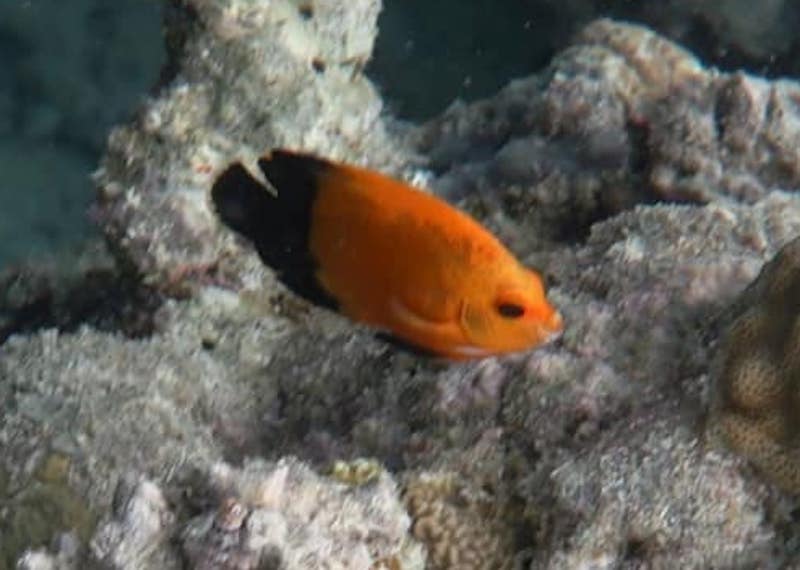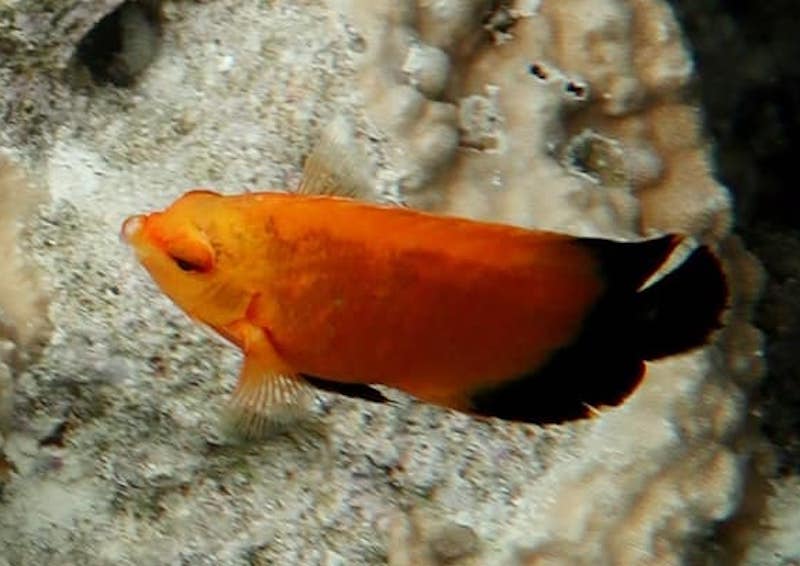One of the most interesting aspects of the beloved angelfish is how often we encounter unusual morphs and aberrations of their typical color pattern, resulting in rare specimens with an appearance that we’ve never seen before. Some species of Centropyge such as the coral beauty and bicolor angelfish are frequently seen sporting some unusual colors but other species rarely stray from the naturally issued uniforms.
The multispine or bluefin angelfish, Centropyge multispinis, is one of four pygmy angelfish species that is predominantly black in coloration, although some subtle details like a blue edge to the ventral and anal fins and a darker shoulder spot are defining features. There have been incredibly few multispine angelfish individuals with aberrant coloration but a recent specimen photographed by Mariouma Dunia in the Maldives is one of the most unusual we’ve seen to date.

With a nearly all orange coloration save for a wedge of black across the tail and posterior of the dorsal and anal fins, this faux bicolor angelfish from the Indian Ocean would be almost indistinguishable to the species level save for a noticeable darker orange stripe joining the eyes across the nape of its snout. This part of the pattern is only visibly suggested in the dark coloration of normal multispine angelfish individuals but it is very noticeable in the fish photographed by Mr. Dunia.
There still hasn’t been any robust theories proposed to explain why this sort of aberration is so frequently encountered across many species of angelfish, there is some evidence to suggest it occurs most often in large male specimens so it could be related to sexual maturity, but this line of reasoning is not airtight. One thing that we do know is that the unusual high orange coloration is not always permanent as many if not most specimens of aberrant angelfish revert back to a more normal coloration in aquarium environments.




